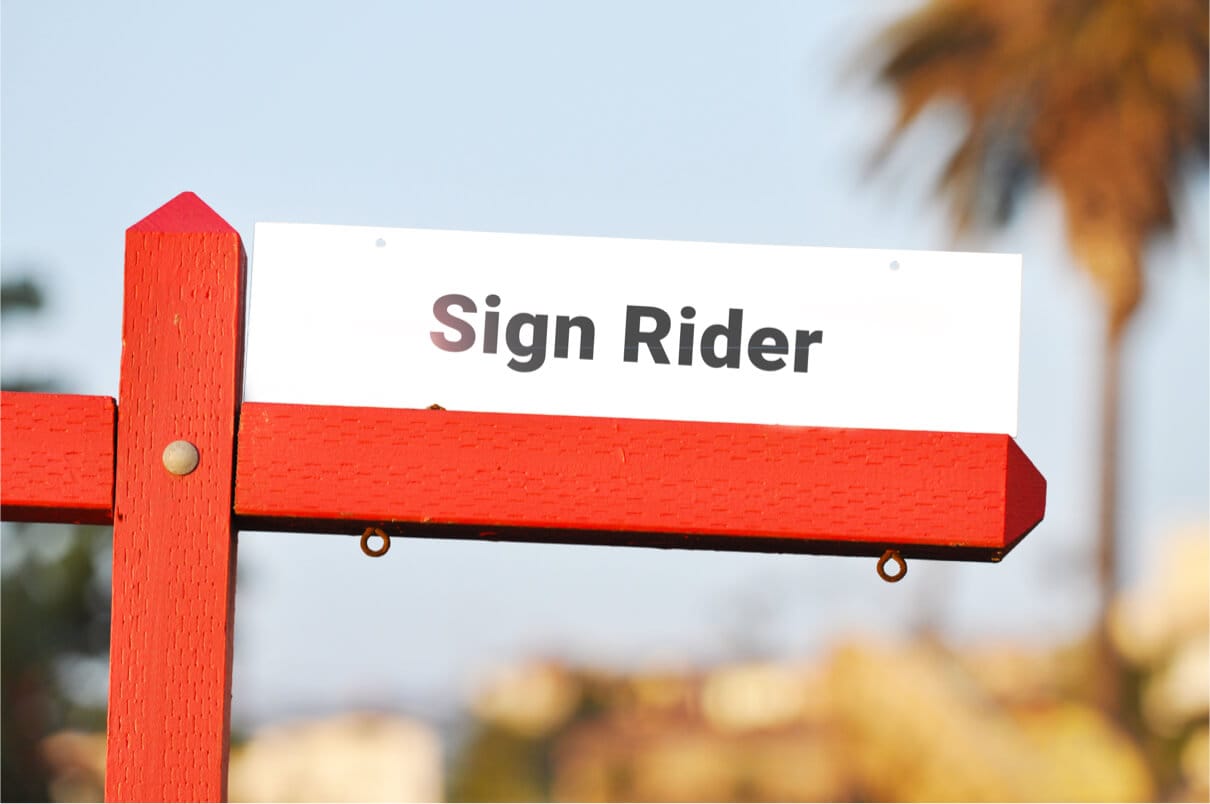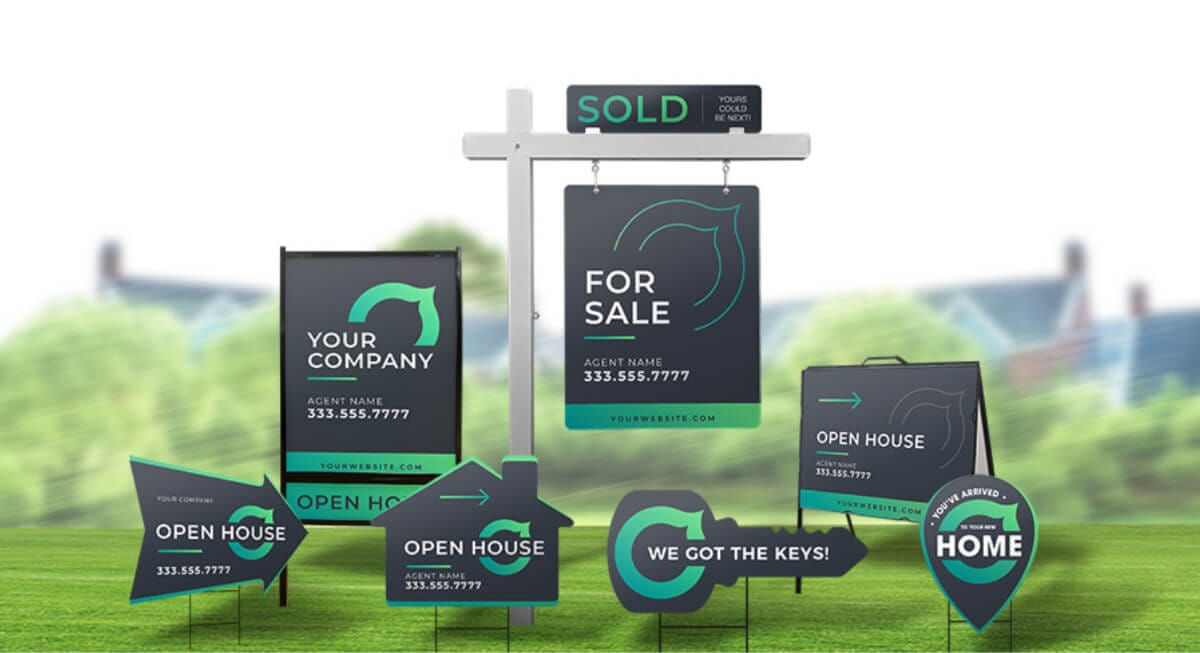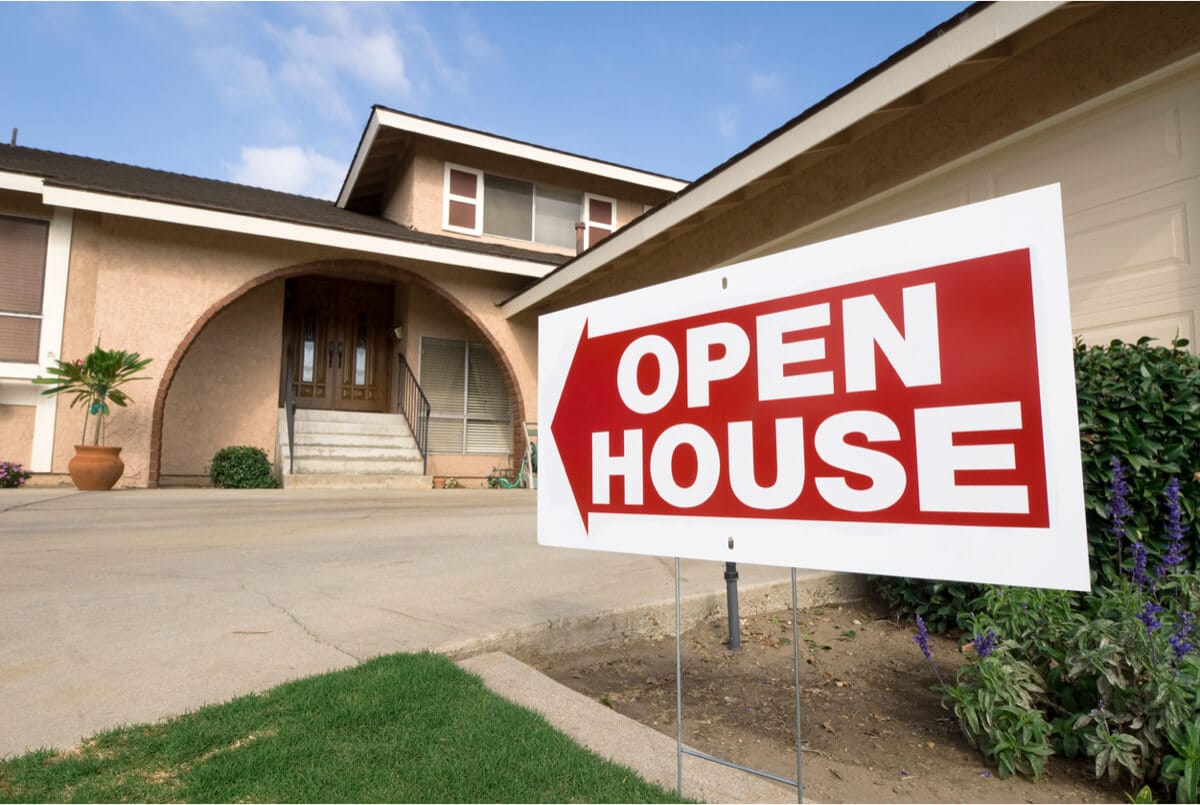How to Create a Real Estate Marketing Funnel and Boost Lead Conversions

Most leads don't convert on the first click or even the second. Now that attention spans are short and options are endless, Realtors need a smarter way to guide prospects from interest to action. That's where a well-built real estate marketing funnel makes all the difference. It helps you create structure and keep your pipeline active without chasing every cold lead.
If your marketing feels scattered, or your best prospects keep slipping through the cracks, chances are you don't have a funnel problem. You have a funnel gap. This guide walks through the key stages and tactics you need to build a high-converting system that turns traffic into clients and browsers into closers. You'll leave with real strategies you can use to generate more leads and close more deals.
The Problem With "Random Acts of Marketing"
Let's call it what it is: Most agents aren't following a system. They're posting on Instagram one week, mailing postcards the next, then running a Google ad when things get slow. It's not a strategy. It's a cycle of reactive decisions. And while these tactics may occasionally bring in a lead or two, they rarely build momentum or lead to consistent closings.
This scattered approach is what marketers call random acts of marketing, a set of disconnected efforts with no real flow, no measurement, and no clear next step for the lead. There's no plan to move people from "just looking" to "ready to work with you." No system to tell you what's working or when it's time to follow up. Just more work and more wondering why your best prospects aren't calling back.
But an effective real estate marketing funnel connects your marketing pieces into one focused path, so every postcard, email, social post, and sign plays a specific role in attracting, nurturing, and converting leads. When your efforts are aligned, your results compound. That's when things start to click.
What a Funnel Does for Realtors
You don't need more marketing. You need marketing that moves. A well-structured real estate marketing funnel builds momentum that keeps working behind the scenes while you focus on what you do best: closing deals.
Connects the Dots Between Your Marketing Channels
Instead of treating every campaign like a standalone effort, your real estate sales funnel links your:
- Online ads and SEO content
- Social media and email follow-ups
- Printed signage and brochure boxes
- Business cards and banners
- Listing presentations and open house materials
Each step is intentional. Each piece supports the next.
Streamlines Marketing Funnel Lead Generation
The top of your marketing funnel lead generation strategy is built to attract new prospects, but a funnel ensures they don't fall off once they're in. Instead of cold outreach or chasing dead ends, you create a natural flow that pulls them closer to action through:
- Targeted content
- Smart follow-up
- Timely calls to action
- Personalized offers based on where they are in the funnel
Turns One-Time Marketing Wins Into Repeatable Results
Good funnels aren't just about one listing or one campaign. They build long-term systems. You can reuse parts of your real estate lead funnel over and over again: email drips, branded assets, contact capture tools. The result? Less scrambling and a pipeline that stays active even when the market slows down.
When Realtors commit to building a real funnel, they stop guessing and start guiding. Every prospect knows where to go next, and you're not stuck chasing leads that aren't ready to move.
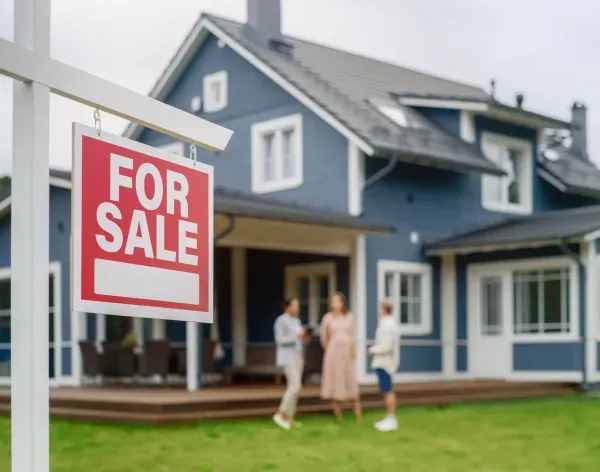
Stages of a Real Estate Marketing Funnel
A high-performing real estate marketing funnel doesn't happen by accident. Savvy Realtors build one with purpose. Each stage plays a specific role in moving prospects from awareness to action, and skipping or underestimating any part of that journey can lead to drop-off. When mapped correctly, your funnel guides leads smoothly through the process, building trust and prompting decisions along the way. Let's break down what each stage looks like and how to optimize it.
Stage 1: Awareness — Get Found by the Right Leads
Before anyone can become a client, they need to know you exist. Awareness is the top of your real estate lead funnel, and it's where you begin attracting new prospects who aren't yet familiar with your services. At this stage, you're not selling. You're introducing yourself and your local expertise.
Here's how top Realtors generate awareness effectively:
- Local SEO and content marketing: Blog posts, neighborhood guides, and listing pages help you rank for searches like "homes for sale in [city]" or "best Realtor near me."
- Social media presence: Consistent, on-brand content builds name recognition and gives your audience a reason to follow and share.
- Online and offline advertising: Google Ads, Facebook campaigns, and targeted mailers all work to get your name in front of the right people.
- Signage and banners: Custom real estate banners placed at listings, open houses, and community events serve as 24/7 lead magnets that drive visibility and credibility.
This is where the marketing funnel lead generation begins. Your job is to make sure the right people are noticing you and taking the first step toward engagement.
Stage 2: Engagement — Earn Attention, Not Just Clicks
Once someone has found you, the real work begins. At this stage of the real estate marketing funnel, your goal is to keep prospects interested long enough to build recognition and encourage interaction. It's not just about clicks. It's about conversations and starting a relationship that doesn't feel forced.
The key to engagement is delivering something your audience actually wants. That could be helpful content, real-time listing updates, or a simple next step that's easy to take.
Here are some effective ways to keep your future clients engaged:
- Local market content: Neighborhood guides, school district highlights, or "just sold" insights that position you as the go-to expert.
- Video walkthroughs or virtual tours: Visual content earns longer attention spans and more shares.
- Interactive content: "What's your home worth?" tools, calculators, or short quizzes.
- QR-enabled print materials: Add QR codes to your brochure boxes or signage to send users directly to a landing page, lead form, or video.
- Downloadable resources: Homebuyer checklists, staging guides, or seller timelines delivered via email (and paired with list-building tools).
This is where you start qualifying leads: who's watching, who's clicking, and who's sticking around. The right engagement strategy sets the stage for real estate lead conversion later in the funnel.

Stage 3: Nurture — Build Trust Over Time
This is the quiet middle of your real estate marketing funnel and the most overlooked stage. A prospect who downloaded a guide or clicked a QR code might not be ready to list or buy today, but that doesn't mean they're lost. They're just not there yet. Your job at this stage is to stay relevant and build enough trust that when they are ready, they don't even think about calling someone else.
This is where nurturing begins. You're not pushing; you're proving. Through value, consistency, and smart automation, you keep your name top of mind without coming off as pushy or desperate.
Effective ways to nurture leads in your real estate sales funnel include:
- Email sequences with market updates or quick tips on buying/selling
- Text message follow-ups to check in on timing or interest
- Retargeting ads that show up on social or Google based on previous engagement
- Resource hubs with blogs and tools tailored to where they are in the process
- Case studies or testimonials that show how you've helped others just like them
The goal here isn't just engagement. It's confidence. When your lead is finally ready to make a move, you've already earned the win. The nurturing stage builds trust and momentum. And when done right, it shortens your sales cycle and increases your real estate lead conversion rate.
Stage 4: Conversion — Turn Interest Into Action
This is the payoff. Everything you've done so far, building awareness, keeping leads engaged, and nurturing trust, funnels into this moment. Conversion is where a prospect makes a move: they book a call, schedule a showing, sign a listing agreement, or finally say "Let's do this." And if your real estate marketing funnel is working right, this step feels seamless, not forced.
You don't need high-pressure tactics. You need clarity. The key here is making it easy to take the next step, and reinforcing that decision with tools and experiences that feel professional and well-thought-out.
This is what helps improve conversion rates in a real estate lead funnel:
- Strong CTAs across landing pages, emails, and print pieces ("Schedule a tour," "See how much your home is worth")
- Simple lead forms that don't ask for too much upfront
- Branded listing presentations that feel custom to the client's situation
- Follow-up materials like real estate business cards and professionally printed packets
- Onsite visuals such as signage and banners that reinforce your brand during walkthroughs and meetings
You've already done the work to build trust. This is where you collect the results. A smooth, conversion-focused finish is what separates browsers from buyers and keeps your real estate sales funnel full of momentum.
Optimize for Higher Conversions
Attracting leads is just the start. What you do with them matters more. A great real estate marketing funnel doesn't stop at awareness or engagement; it's meant to convert. This is where smart strategy meets small refinements that make a big difference. By personalizing your approach, tracking performance, and using tech that supports your workflow, you turn more interest into action and more prospects into clients.
Make Your Funnel Personal, Not Generic
Leads don't convert because they're impressed with your automation. They convert because they feel like you understand them. A high-converting real estate marketing funnel speaks directly to the buyer or seller's goals and concerns. That requires more than templated emails and generic landing pages. It requires personal touches that reflect your market knowledge and value.
Brand consistency plays a big role here and throughout your real estate marketing plan. From the first social impression to your business card and listing packet, everything should feel like it came from the same professional. Use clear messaging, visuals that match your brand, and a tone that mirrors how you speak in person. That familiarity builds trust, and trust builds conversions.
Track What's Working and What's Leaking
Funnels fail when no one's watching the numbers. Every part of your real estate lead funnel should be trackable. Where are people clicking? Where are they dropping off? When are they ghosting you, and when are they booking?
The best Realtors use simple tracking to fix leaks before they become lost revenue:
- Set benchmarks for open rates, form completions, landing page traffic, and appointments booked.
- Use tools like your CRM, Google Analytics, or your email platform data.
- Track physical engagement too: How many brochures are taken from your brochure boxes? How many attendees are coming from QR code scans?
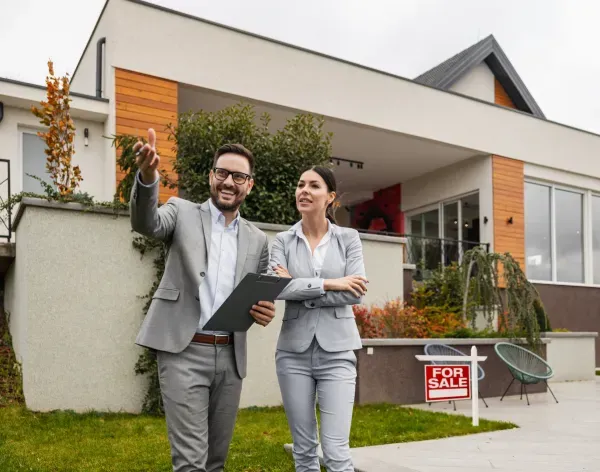
A funnel that's measured is a funnel that improves. And over time, these small adjustments compound into higher real estate lead conversion without having to generate more leads in the first place.
Use Tech That Moves Faster Than You Can
You can’t be everywhere at once, but the right tools can fill the gaps. From smart CRMs that automate follow-up to QR codes that push print materials into your digital world, today’s tech lets you stay responsive without being glued to your inbox.
Here’s what Realtors are using to strengthen their real estate sales funnels:
- CRM tools like Follow Up Boss, kvCORE, or LionDesk
- Automated email and SMS follow-up tied to lead behavior
- Virtual tour platforms and interactive listings
- Scheduling links that remove friction from booking consultations
- Custom signage paired with QR codes, driving traffic from the street to your site
Want more on the latest tools beyond our real estate funnel examples? See Real Estate Technology and Trends for ideas that level up every step of your funnel without overwhelming your workflow.
Take Action and Build Your Funnel
A high-performing real estate marketing funnel doesn't need to be complicated, but it does need to be intentional. The most successful agents aren't throwing out more content or running bigger ads; they're refining how leads move through their funnel and making every interaction count. If you're not seeing the conversions you want, it's probably not your audience. It's your structure.
Start small: build a funnel for one audience segment (buyers or sellers), and map out what you're already doing at each stage. Identify gaps. Look for what's missing between awareness and conversion. Then fill in with targeted tools, useful content, and brand-forward assets that do the talking for you.
Need help reinforcing your funnel in the field? Oakley Signs offers real estate yard signs and physical marketing materials that support every stage of your strategy. Explore our full shop to align your branding from sidewalk to inbox.
Shop NowFrequently Asked Questions
With finding their homes through real estate agents, a Realtor's role in the home selling process is undeniable. Here are answers to some common questions to help you make the most of your real estate marketing funnel.
Can physical marketing tools, like custom real estate signs or open house directionals, play a role in a digital marketing funnel?
Absolutely. Physical tools like custom yard signs and directional arrows are often the very first touchpoints in your real estate marketing funnel. They drive awareness and, when paired with QR codes or landing page links, can direct leads right into your digital funnel. It's not a matter of print or digital. The most effective funnels blend both to guide prospects to your site.
How do you measure the effectiveness of each stage in your real estate marketing funnel?
Each stage of your real estate lead funnel should have its own metric. For awareness, look at impressions, reach, and traffic sources. For engagement, track time on page, email opens, or content downloads. In the nurture stage, monitor replies, click-throughs, and retargeting performance. And for conversion, focus on scheduled appointments, signed agreements, or closed deals. The key is identifying where leads are stalling and then tightening up that stage.
What tools or platforms can Realtors use to automate their real estate marketing funnel?
There are plenty of platforms that make funnel automation easier for Realtors. CRMs handle lead tagging, email drips, and contact follow-up. Tools like Zapier connect your web forms, email platform, and calendar so leads move without manual work. Platforms like BombBomb or Loom let you send quick, personalized videos that feel human but scale fast. These tools help your real estate sales funnel move even when you're not at your desk.


